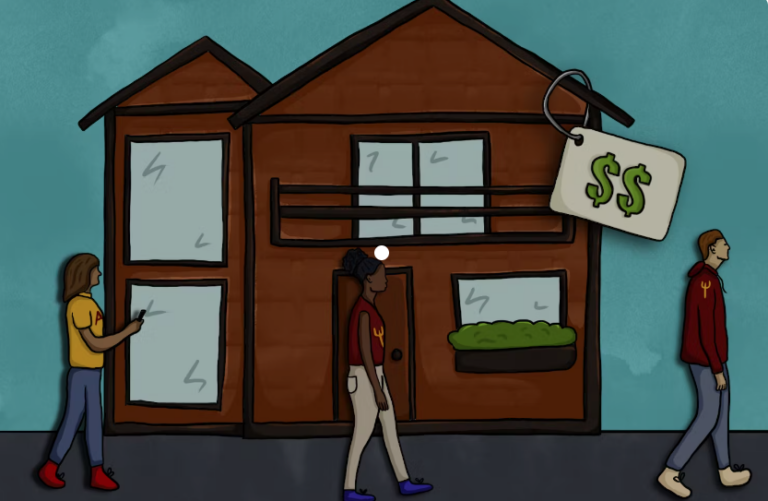A new City-commissioned report from Matrix Design Group shows Tempe’s efforts to improve affordable housing stocks have not been able to keep up with surging prices.
Tempe’s occupied rental market has a smaller percentage of affordable units than any similarly sized college town in the study. The study concludes that Tempe will have to more than double the number of lower-income units to address what it calls a “severe deficit.” Those towns have at least 80% of their apartments renting at affordable rates for people earning less than $63K.
Tempe’s share is just 26%, and the city’s 93% residential occupancy rate means few options exist among existing supplies.
With students making up a major share of Tempe’s economy, there could be significant repercussions if those students are forced to live, work and play in other parts of the Valley because they cannot find affordable space in Tempe.
Officials, including Mayor Corey Woods, are also worried that the lack of affordable options may impact essential workers like public safety staff and teachers.
Tempe has several initiatives in place to add to its affordable unit count and hopes to reduce its deficit by 75% over the next 20 years. Those initiatives include partnerships with developers and the Hometown for All campaign launched to generate funding for City-owned/controlled affordable housing development.
Hometown for All lets developers create a “public benefit” when proposing new projects. They make a donation to the program, which is then routed to a non-profit developer called the Tempe Coalition for Affordable Housing. TCAH then uses the funds to establish affordable units on neglected or empty sites. In addition to developer contributions, Tempe puts 50% of new project permitting fees into the program.
Tempe wants to create 11,000 affordable units by 2040, but its current rate of development is four times slower than necessary to reach the goal.
Roughly 50% of the city’s housing inventory is considered “workforce,” which is affordable for households making between $63K and $93K/year. The city’s income demographics, however, lean toward lower-income residents who earn less than the $30 hourly rate needed to afford a workforce unit. Only about a quarter of the units in Tempe is affordable for that population.
The study cites the COVID pandemic as a key contributor to reduced affordability in the Valley. While incomes have remained largely the same over the past decade, the pandemic and other factors have increased home prices by more than 150%. The price increase, combined with the high occupancy rate, means Tempe must build more rental units if it means to improve affordability.
To fully adjust to the deficit it currently faces, Tempe will have to double its lower-income rental market inventory from its current 13,000 units to approximately 28,000.
Since the Hometown for All program was announced in 2021, it has created 59 affordable units. Another 395 are in development and planning. Other efforts have created 225 mid- and low-income units.
Including planned units, Tempe’s efforts are currently on pace to deliver 136 units per year. To reach its goals, that will have to increase to 550 units. (Source)

